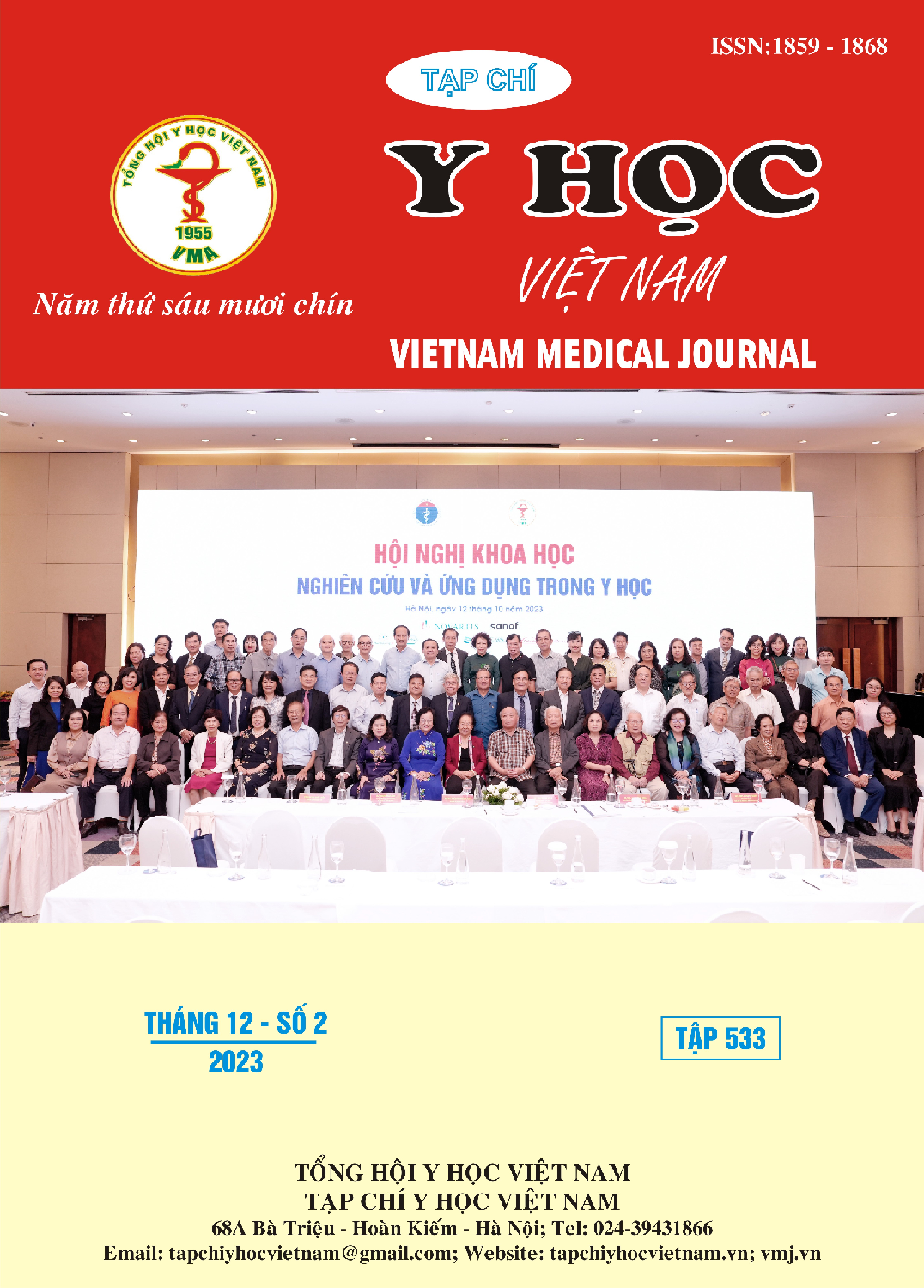TREATMENT CHARACTERISTICS IN INPATIENT WITH MIXED ANXIETY AND DEPRESSIVE DISORDER
Main Article Content
Abstract
Objective: To describe the treatment characteristics in inpatient diagnosed with comorbid anxiety and depressive disorder (F41.2) according to the ICD-10 criteria. Method: Cross-sectional description of 75 inpatients treated at the Mental Health Institute - Bach Mai Hospital and Hanoi Mental Hospital, meeting the diagnosis of mixed anxiety and depressive disorder (F41.2) according to ICD-10 diagnostic criteria, from November 2022 to March 2023. Results: 100% of the patients received combination therapy, with the majority (86.7%) receiving a combination of antidepressants, anxiolytics, and antipsychotic. The majority of patients (68.0%) underwent pharmacotherapy combined with relaxation therapy. Sertraline and fluvoxamine were the most commonly prescribed antidepressants (36.0%). Quetiapine was the preferred choice for atypical antipsychotic (69.3%). Diazepam was commonly used during the treatment process (90.7%). Constipation (37.3%) and dry mouth (13.3%) were the most common side effects. After treatment, there was a significant reduction in psychological test scores with p < 0.001. Conclusion: During inpatient treatment, the majority of patients with comorbid anxiety and depressive disorder received multi pharmacology therapy along with relaxation therapy. After 14 days of treatment, overall, patients showed a gradual reduction in depressive symptoms and an improvement in sleep quality.
Article Details
References
2. First MB. DSM-5 proposals for mood disorders: a cost–benefit analysis. Current Opinion in Psychiatry. 2011; 24(1):1-9. doi: 10.1097/ YCO.0b013e328340b594
3. Fawcett J. Mixed Anxiety-Depression. Textbook of Anxiety Disorders Second edition. American Psychiatric Publishing. 2009;239-259.
4. La Đức Cương. Nghiên cứu đặc điểm lâm sàng rối loạn hỗn hợp lo âu trầm cảm ở bệnh nhân điều trị nội trú. Luận văn tốt nghiệp bác sĩ chuyên khoa cấp 2. Trường Đại học Y Hà Nội. 2010.
5. Vũ Thị Lan. Nghiên cứu đặc điểm lâm sàng rối loạn hỗn hợp lo âu và trầm cảm ở người bệnh nữ độ tuổi 45 - 59, điều trị nội trú tại bệnh viện sức khỏe tâm thần từ tháng 9/2014 đến tháng 8/2015. Luận văn tốt nghiệp bác sỹ nội trú. Trường Đại học Y Hà Nội. 2015.
6. Jeremy DC, Cindy JA, Venkatesh P, Younsuk K. Treating comorbid anxiety and depression: Psychosocial and pharmacological approaches. World journal of Psychiatry. 2015; 5(4): 366-378. doi: 10.5498/wjp.v5.i4.366
7. Hồ Thu Yến. Nghiên cứu đặc điểm lâm sàng các triệu chứng cơ thể của rối loạn trầm cảm ở phụ nữ độ tuổi 45-59. Luận văn tốt nghiệp bác sĩ chuyên khoa cấp 2. Trường Đại học Y Hà Nội. 2012


